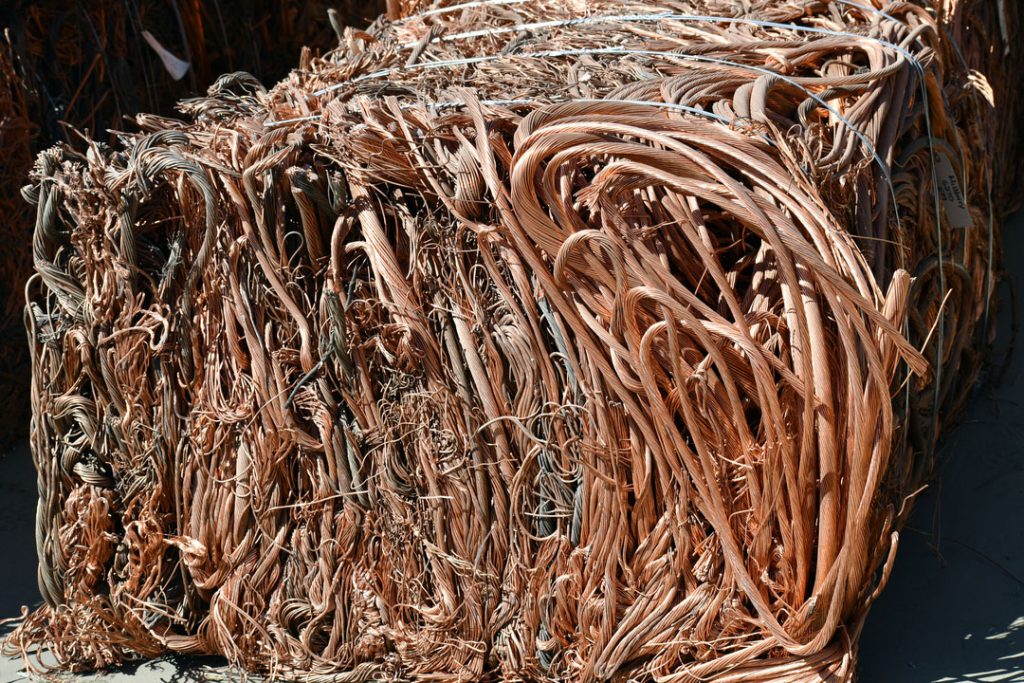
China’s imports of some categories of non-ferrous metals, including copper, have gone down because of import quotas. | Andrew b Stowe/Shutterstock
Reports from the Bureau of International Recycling shine a light on non-ferrous scrap metal markets as we enter the new year, particularly in China.
In the Bureau of International Recycling (BIR) January reports, a number of experts mentioned China’s decision to issue specifications for copper, brass and aluminum scrap. The move is an indication China will continue allowing imports of these metals as recyclable products as long as they are very clean, and the country will not be banning them as “waste,” according to Reuters.
David Chiao of Uni-All Group and president of BIR’s Non-Ferrous Metals Division wrote that China reclassified “scrap material” as “recycled material.”
“Scrap trade routes are largely settled and end products like ingots still depend on Chinese consumption, so the importance of this ‘recycled material’ reclassification should not be underestimated,” Chiao wrote.
The Institute of Scrap Recycling Industries (ISRI) similarly praised the classification, noting that “it is a major indication that the Chinese government finally acknowledges that scrap commodities are valuable products and imports, and should not be managed under the same guidelines for ‘solid waste.'”
BIR issued a statement on the new non-ferrous metal specifications, noting that the development will require recycling companies to undertake more costly processing to hit the quality standards, in turn driving up product costs.
“The question remains whether there is the scrap processing capacity to meet the demand for high volumes of high quality scrap,” according to BIR’s statement. “In general, over the last years, more investments in sorting and processing machinery have been – and continue to be – made.”
Meanwhile, some experts noted that China’s imports of some categories of non-ferrous metals have gone down because of import quotas.
“China Customs reports that copper and aluminium scrap imports have dropped sharply over the last six months owing to quarterly quota restrictions as we close in on the goal of zero solid waste imports by the end of 2020,” Shen Dong of U.S. company OmniSource Corporation wrote.
In the BIR reports, a number of experts also reported on recent trade agreements. They mentioned the first phase of the U.S.-China trade agreement, which halted further tariffs between the countries but left in place those already imposed, including on scrap materials.
Ibrahim Aboura of Dubai-headquartered Aboura Metals wrote that news of the Phase One agreement helped drive up copper and lead prices on the London Metal Exchange (LME). The higher prices have boosted non-ferrous scrap trade in the Middle East. Still, rising tensions in the region because of the conflict between the U.S. and Iran could change the market outlook and behaviors overnight, he wrote.
A number of writers also touched on the U.S.-Mexico-Canada Agreement (USMCA). Congress finalized approving the free trade agreement, which replaces the 26-year-old North American Free Trade Agreement (NAFTA), earlier this month.
“Having the new trade deal in place will provide much-needed certainty for supply chains across North America,” wrote Alejandro Jaramillo of Mexican company Glorem SC. “The new deal calls for higher percentages of regional content in vehicles produced within the region, at the same time recognizing that the region is deficient in aluminium and thus allowing tariff-free imports of primary and ingots for transformation within the new USMCA market. This should provide a boost for remelt operations and auto part manufacturers.”
A version of this story appeared in Resource Recycling on January 28.
More stories about metals
- Australian metals company rebrands, builds Texas plant
- Project brings rare earth recovery into e-scrap facility
- Company debuts battery-containing device shredder